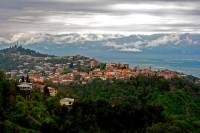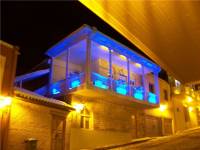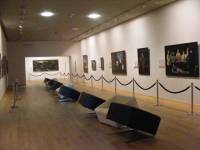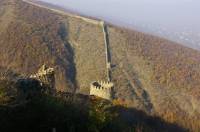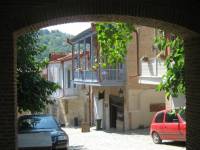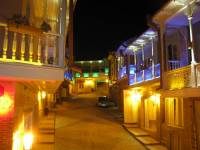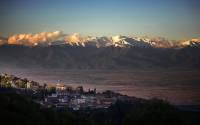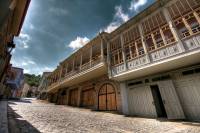Construction of the fortress town is linked to the name of King Erekle II (1726). He has ordered to build a town with the fence in the place of an old stronghold. Sighnaghi was a royal town and was a center of Kiziki, one of the districts of Kakheti region; it was administered by Mouravi (manager). Once Imperial Russia annexed Kartl-Kakheti (in 1801), Sighnaghi became a center of Mazra.
The fortress is laid across about 40 hectares; it is mainly built with cobblestones, but there are also some bricks used. The Fence goes along the mountain relief, then plunges into the gorge from both sides and merges there inside. The fortress was able to harbor whole population of Kiziki in case of enemy invasion. There are 23 towers built-in in the fence, which are named after adjoining villages (such as Bodbe, Velistsikhe, Mirzaani etc.). Majority of towers are two-storey, a handful of them - three-storey, equipped with embrasures, fireplaces, holes and fighting roofing. The fence is arranged in two tiers. The first tier is solid and deaf; the second one incorporates a fighting path, having embrasures inside its walls. The Fence has five gates, through which the mine door was directly connected to the fortress.
A new town of XIX century has occupied a part of the old one and partly, the territory of the fortress as well. Nowadays, initial image of Sighnaghi town is almost maintained. Ethnic style residences now house family hotels; there are magnificent views of Alazani Valley from verandahs and roofings, while delicious dishes of Georgian cuisine are generously available there.



